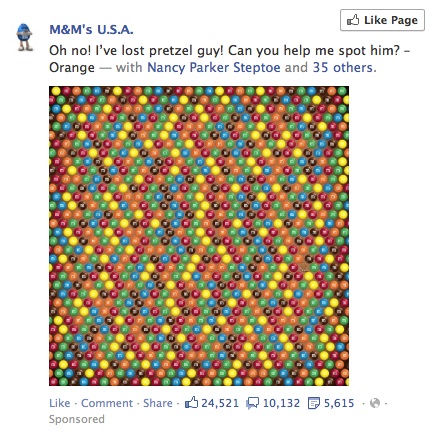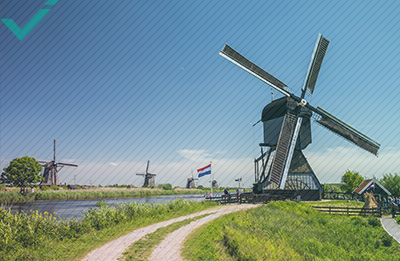Using games to draw potential clients and customers to a brand, product, or even a service is a highly effective marketing strategy. Content marketing, in general, is a key tenet to achieving success with your digital campaigns. However, games-as-content are becoming a popular method for driving both brand engagement and customer acquisition.
This strategy is called gamification. It is the application of a game to an environment not normally associated with the same. However, it is also a method of using customer engagement to drive brand awareness and loyalty.
But what is it beyond fun? The easy answer? It is a way of creating motivation. Essentially, it engages your potential customers in some kind of creative competition. It is more than “just” watching a video or reading a clever bit of copy; gamification allows customers to interact with your brand in a whole new way. Further, it is much better if the game or competition allows participants to acquire new skills or knowledge. Or better yet, if they can win something tangible.
If the game is fun and engaging, this also creates a viral and social opportunity far beyond your initial customers. If users have fun, they are much more likely to share the link or game with friends via social media.
Gamification, in other words, is a way to translate the emotional high of “winning” into positive customer engagement. It is part of the customer journey and increases the amount of time they will spend on your app or site. Such strategies can also heavily influence purchase decisions in both the present and future.

TIPS FOR INCORPORATING GAMIFICATION
So, you want to design some kind of game or contest for your user base? Here are 5 quick tips to guide you.
1: KNOW YOUR AUDIENCE
No matter who you are, you must know who your customers are demographically. Whether it is age, gender, cultural background, or a combination, such groups will have common features that allow you to determine what kind of game will appeal to them.
A Millennial customer base, for example, will need to be engaged differently than the Boomer or Gen X populations. This includes the kind of game you create and the skills it takes to play it. For instance, the appeal of “retro” knowledge or imagery can be used to appeal to numerous generations. Are giveaways or discounts more appealing? If you are giving away tickets to an event, who are the people that normally go? And how does that cross over into your target demographic? These are all key questions the potential gamification marketer must ask and explore.
2: RESEARCH, RESEARCH, RESEARCH
What kinds of games are out there? And who are they most effective with? Is a crossword puzzle better than a click and point game? Is a mix and match picturegram smart enough to engage older customers? Beyond the actual games themselves however, there are other issues to consider. The subject matter or milieu of the games themselves is also important.
For example, a car racing game might appeal more to male consumers, but not that much to women. Having only a male (or white) character might turn off other demographics. Games of skill must be matched to age and other cultural factors. Otherwise, they will bore or turn-off potential clients. The games that do best tend to feature things like scoring, rewards, and the ability to share on social media. Remember, context is key.
One example of a gamification campaign that ended badly due to lack of consumer research? The launch of a “recruiting” game by the US Army. It was so controversial that the campaign was quickly scuttled. Why? War is not a game. And joining the military service is potentially very dangerous.
3: WHAT ARE THE INCENTIVES?
People enter contests all the time to win free stuff. Winners of your game could get a product, a discount code, or another reward. If your products can be easily and freely distributed, great – you have an excellent opportunity. However, if your product or service is not easily given away, there are other options; think discount codes for starters. People like to feel smart. We like the feeling of winning. What is a game that can be associated with your brand, product, or service that might facilitate this customer experience?
4: WHAT IS THE BEST MEDIUM?
Social media is not all the same. Your campaign might be better suited to Instagram rather than Facebook or Twitter. Knowing how to reach audiences via different social media outlets is very important, as is knowing who tends to use each channel and for what purpose.
5: TEST, TEST, TEST
Consumer testing of your game is also a way to understand, from a hands-on perspective, what your customers might want, need, or best respond to. Maybe your questions are too hard or easy if you are offering a trivia or crossword game. Maybe the look of the game is not appealing to your audience. Understanding how your core demographic interacts with your creative side is key to launching successful gamification campaigns.
GAMIFICATION IN PRACTICE
You probably are more aware of gamification than you might think. It is already a widely used practice, even if not instantly recognized.
For example, in 2013, Heineken Beer launched a game called “Crack the US Open“. Consumers had to follow clues in photo captions and comment to win. The reward was game tickets. The incentive to attend the US Open for free was a powerful reason for customers to play, even though it was a sports event that had nothing to do with beer.
The contest lasted three days and featured seven events. More than 1,500 players participated and Heineken gained an impressive 20% uptick in US followers.
M&Ms candy used a cool gamification campaign on Facebook. The brand published a graphic of M&Ms on their account page. Users had to find “the pretzel” hidden among the candies.
This campaign went viral. It generated over 25,000 likes, 6,000 shares, and 11,000 comments.

The “Pleasure Hunt” by Magnum, the ice cream brand, is an example of a very high-end game. It was launched to celebrate the company’s 25th birthday. Players can control a character and help her collect chocolates from a range of websites. This engaging campaign, which was both fun and funny, went viral quickly.
HOW TO IMPLEMENT GAMIFICATION STRATEGIES
While some of the games you might see are animated, you do not have to be fancy – just clever. Here are a few other strategies to consider as you think about your game and all that goes along with it.
1: TAKE SMALL STEPS
You do not have to reinvent Monopoly, especially on the first try. Think about a simple game that can be done in one slide. Facebook, Instagram, and Twitter are very good places to launch this kind of approach. YouTube is another place you can try, but you need to be smart about this. Cheap animation software makes clever short videos a snap, as does the smart editing of higher-quality cell phone footage.
2: THE GAME HAS TO MAKE SENSE
The game must have simple rules that are easy to understand. Furthermore, it must take a short time to play, including accruing points and rewards.
3: RELATE THE GAME TO YOUR MARKETING GOALS
Ultimately, you want your game players to become customers. Or sign up for a newsletter. And most certainly, you want them to become more familiar with your product or service. As a result, don’t just launch the game by itself, but include links to your website to drive customer journeys and experiences.

